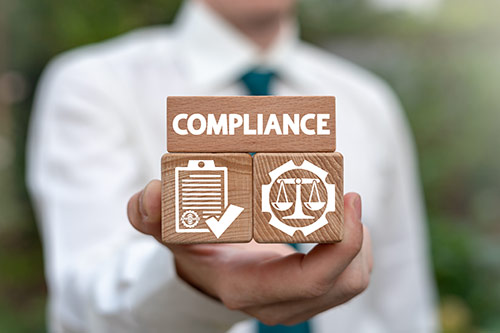How to Build an Effective Compliance Monitoring Program & Support Ongoing Risk
 A monitoring program is an important part of a health plan’s compliance program and provides valuable information to the Compliance Department to ensure the plan is meeting requirements. Effective monitoring requires coordination with operational areas and supports ongoing risk assessment. Monitoring not only provides a mechanism to detect compliance issues throughout the organization but also provides a level of reassurance that operations are compliant with requirements. This information allows the Compliance Department to make decisions on allocating resources to higher-risk areas and provides information to support oversight by senior management, the Compliance Committee, and the governing body on the state of compliance throughout the organization.
A monitoring program is an important part of a health plan’s compliance program and provides valuable information to the Compliance Department to ensure the plan is meeting requirements. Effective monitoring requires coordination with operational areas and supports ongoing risk assessment. Monitoring not only provides a mechanism to detect compliance issues throughout the organization but also provides a level of reassurance that operations are compliant with requirements. This information allows the Compliance Department to make decisions on allocating resources to higher-risk areas and provides information to support oversight by senior management, the Compliance Committee, and the governing body on the state of compliance throughout the organization.
Section 50.6 of Chapter 21 of the Medicare Managed Care Manual defines monitoring as “regular reviews performed as part of normal operations to confirm ongoing compliance and to ensure that corrective actions are undertaken and effective… Sponsors must develop a monitoring…work plan that addresses the risks associated with the Medicare Parts C and D benefits..” Creating a monitoring program from scratch can seem like a daunting task, but once the framework is in place, it can be used to scale the program and respond to identified issues.
Creating a Monitoring Program
The first step is to leverage existing reporting, including information already being gathered in operational areas. Julie Hughes, CODY® Chief Compliance Officer, describes the process of setting up a compliance monitoring program as follows: “See what’s already being done within the organization and make sure that it gets incorporated into your compliance program structure. Meet with all operational areas, see what’s being reported from a requirements standpoint, put everything on a schedule where compliance receives it and can use it as monitoring data and take action as needed. Build a system that will support it, whether that’s a spreadsheet or dedicated software. Later you can put additional monitors in place based on your risk assessment.”
Once the process has been established to include current reporting into the compliance program structure, use your risk assessment and collaboration with the operational areas to identify additional monitors that can be added to the monitoring work plan. Creating monitoring data that is automated will not only support a more robust monitoring program but will also encourage operational-area participation by reducing burdens on resources. Once the monitoring process is established, it is easier to create monitoring in response to compliance issues to support validation that corrective action was successful in correcting the issue and preventing further occurrence. This approach can be used for oversight of both internal operational areas and first tier, downstream, and related entities.
An Essential Part of Any Compliance Program
Building a monitoring program supports the effectiveness of your compliance program. Increasing detection activities throughout the organization support a more effective program; more importantly, regular communication and collaboration with operational areas through monitoring improves operational-area engagement in the compliance program. For Medicare Advantage Plans, these components support a better result in the plan’s annual compliance program effectiveness review or a CMS Compliance Program Effectiveness audit.
CODY® can support you in your efforts to build a more effective compliance program by:
- Assisting you in setting up monitoring programs
- Working with you to set up mechanisms to track results
- Identifying core monitoring activities based on CMS focus areas
- Supporting risk assessment activities to mitigate risk areas specific to your organization
- Performing compliance program effectiveness reviews to provide feedback on your current program
The CodySoft® Appeals and Grievances Module® (A&G) supports the centralized capture of required information upfront to decrease backend work—allowing more time for Quality Assurance (QA) rather than data gathering. It also provides reporting features such as the timeliness of responses and helps ensure the content of appeal letters is accurate by providing standard templates. Plans that need to implement monitoring activities would find that the CodySoft® A&G module provides valuable structure.
About CODY®: CODY® works with more than 70 government-funded, commercial, and ACA health plans across 47 states and Puerto Rico. We help optimize operations to enhance revenue, improve regulatory compliance, and streamline communications across the enterprise. CodySoft®, our comprehensive suite of proprietary software, is specifically designed for health plans.www.codyconsulting.com.
